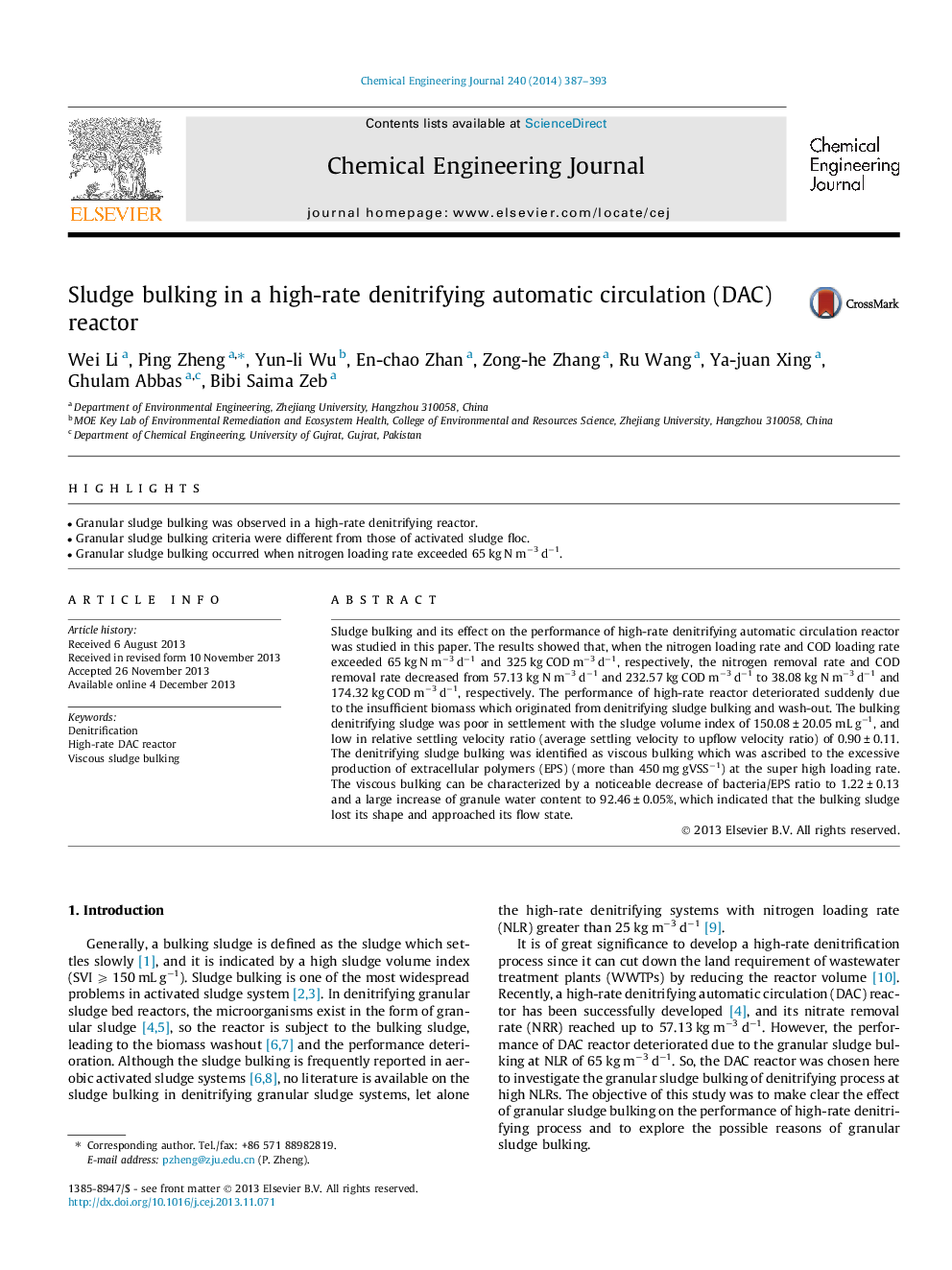| Article ID | Journal | Published Year | Pages | File Type |
|---|---|---|---|---|
| 147692 | Chemical Engineering Journal | 2014 | 7 Pages |
•Granular sludge bulking was observed in a high-rate denitrifying reactor.•Granular sludge bulking criteria were different from those of activated sludge floc.•Granular sludge bulking occurred when nitrogen loading rate exceeded 65 kg N m−3 d−1.
Sludge bulking and its effect on the performance of high-rate denitrifying automatic circulation reactor was studied in this paper. The results showed that, when the nitrogen loading rate and COD loading rate exceeded 65 kg N m−3 d−1 and 325 kg COD m−3 d−1, respectively, the nitrogen removal rate and COD removal rate decreased from 57.13 kg N m−3 d−1 and 232.57 kg COD m−3 d−1 to 38.08 kg N m−3 d−1 and 174.32 kg COD m−3 d−1, respectively. The performance of high-rate reactor deteriorated suddenly due to the insufficient biomass which originated from denitrifying sludge bulking and wash-out. The bulking denitrifying sludge was poor in settlement with the sludge volume index of 150.08 ± 20.05 mL g−1, and low in relative settling velocity ratio (average settling velocity to upflow velocity ratio) of 0.90 ± 0.11. The denitrifying sludge bulking was identified as viscous bulking which was ascribed to the excessive production of extracellular polymers (EPS) (more than 450 mg gVSS−1) at the super high loading rate. The viscous bulking can be characterized by a noticeable decrease of bacteria/EPS ratio to 1.22 ± 0.13 and a large increase of granule water content to 92.46 ± 0.05%, which indicated that the bulking sludge lost its shape and approached its flow state.
